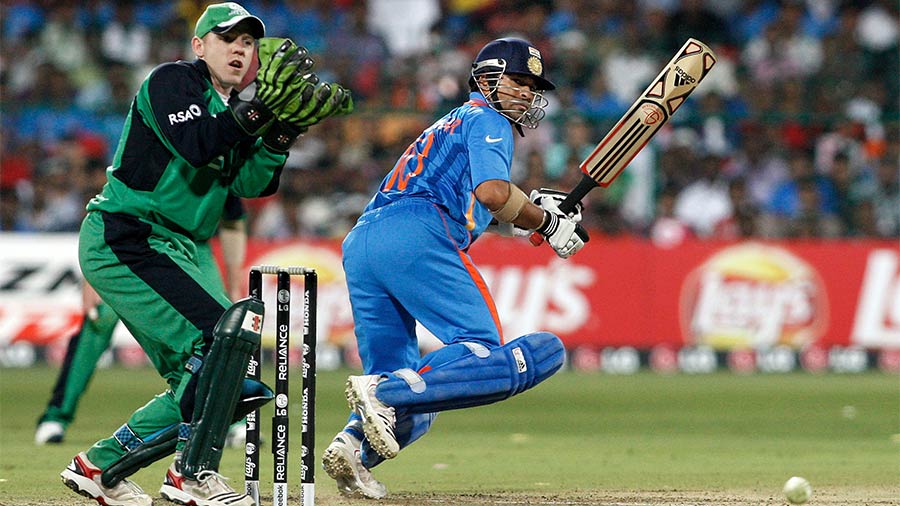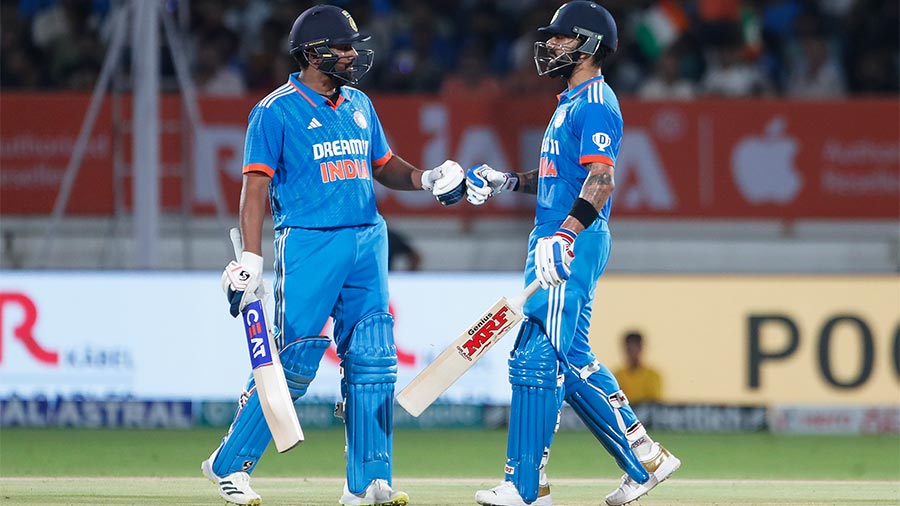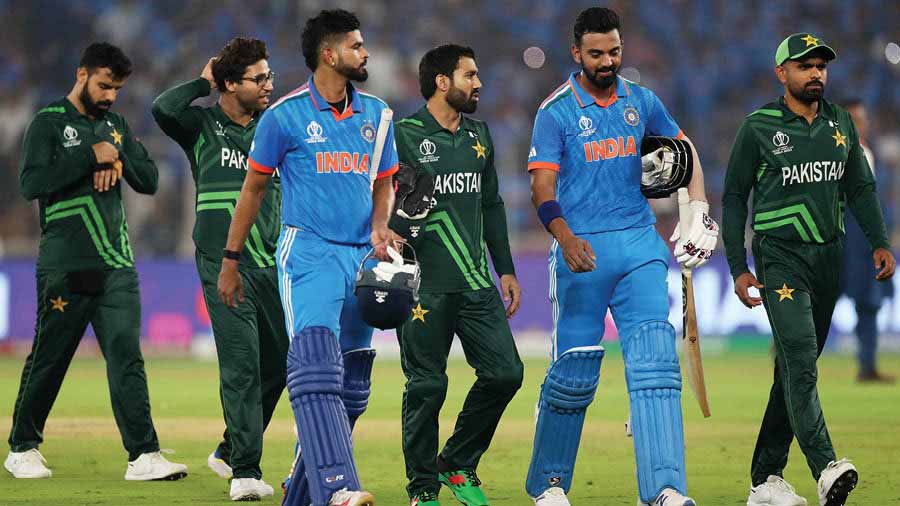On a musty August evening in 1990, Varun and I had shared a rainwater puddle to sail our paper boats in. We did not know one another’s names, but we knew we lived in houses on the two ends of the same quiet street.
“There you are!” screamed Varun’s father, as he stepped out of their wicker gate. “Wasting away as always. Do you know a boy not much older than you is hammering senior English bowlers all over the ground? Come inside and do your homework now.”
Curious as we were about the correlation between a boy hammering bowlers in England and Varun’s need to do his homework in Ahmedabad, we were more intrigued about the boy in mention. I accompanied Varun till his doorstep and took a peek at the curly-haired teenager executing poetry in motion as a clueless Graham Gooch struggled to seal a win. The innings lasted long enough for me to be invited into their living room and be served a generous portion of rasam and rice “now that you are here”. When the television screen flashed “Live telecast will resume after the News”, I was nudged into remembering I had my own home to go back to. But by then, Sachin Tendulkar had already triggered a friendship between Varun and I that would stand the test of time. Well, almost.
The Tendulkar phenomenon that would transcend the space-time continuum

For over two decades, Sachin Tendulkar was the glue binding Bhadresh and Varun together Getty Images
For decades that followed, Varun and I bonded over the Tendulkar phenomenon. We bought similar Power bats, played in the local playground every evening (where four or more matches were concurrently in progress), and bared our teeth in a Tendulkar-esque grimace while taking stance before chalked stumps drawn over betel-stained walls. At some point, we took things too far by enrolling ourselves in serious club-level cricket, soon exposing to the world our sheer ineptness at wielding the bat (not much of actual Power, you see). Thereafter, we quickly switched to our next best aspiration of being armchair critics and “subject matter experts” of the game. We followed all of Tendulkar’s innings with passion and anxiety, coming up with novel excuses for missed school attendance and, later, for those sudden sick leaves at work that always coincided with an important India match.
At some point in our 20s, whispers began in the corridor about a batter with effortless stroke-play “just like Sachin” and how we had to have seen his gutsy half-century against South Africa at the 2007 World T20. Not long after, we heard more whispers about this young Delhi boy who took India’s Under-19 team to a World Cup victory in Kuala Lumpur. His grit and cover drive, again, they said, were “just like Sachin”. We turned a blind eye to these claims, for in our heads the Tendulkar era was here to stay. A phenomenon that would transcend the space-time continuum. For our lives had never been imagined any other way.
And then came a day when Tendulkar reduced us to messy tears with a farewell speech. We vowed never to watch cricket again. But armchair cricket enthusiasts cannot be kept away from the television forever. We took to our usual pre and post-game pontifications, but we no longer had the same idol. Just like a certain Sachin once brought us together, Rohit Sharma and Virat Kohli now drove us apart. With equal fervour.
We have converted the World Cup into a Rohit versus Virat duel

While Virat stole the show against New Zealand, it was Rohit’s turn to be the man of the moment against England Getty Images
We now inhabit different corners of the world, separated by a lot more than a quiet street. I am in Melbourne, he lives in Vancouver (they don’t even play cricket there; not yet, at least). Varun seeks entertainment in the garb of a fulsome cricket-watching experience. He is a sucker for Rohit’s fireworks. Fitness be damned. When Rohit hit a mammoth 264 in an ODI against Sri Lanka in 2013, Varun thought he had had the last laugh for this was a record that could never be surmounted. Very well, I told him years later, at the start of this World Cup: “Virat now has more ODI centuries than Rohit has in all formats of the game put together.”
No one knows who the better of the two batters is. But we have now made it a practice to tune into an argumentative video call during the course of each game. With matches as one-sided as these, we have converted the World Cup into a Rohit versus Virat duel. And boy, it has been fun!
As India saw off New Zealand in Dharamshala, we remained divided on who the real hero of the day was. The one who ignited the initial spark of the innings or the anchor who nearly gave us another cliffhanger of a chase between his century and an Indian victory. Come the afternoon in Lucknow, the debate was put to rest. As if to tell me that the bickering was becoming an overkill, Virat spooned an uncharacteristically poor shot to mid-off and put an abrupt stop to our banter for the night even as Rohit — as I put it mildly to Varun — played sensibly like Virat.
Just as we are about to hang up, Varun’s father, still an astute follower of the game, clucked his tongue. “Tch…But there will still be only one Sachin, no?”
After years, Varun and I found something to agree on.
The above is a semi-fictionalised account as part of a series that documents the experience of Bhadresh (a character drawn from the life of the author) watching the 2023 ICC Men’s Cricket World Cup in Australia.
Nishant Kaushik is the author of eight novels. His latest, Bhadresh Mhatre’s Slam Book, released in September 2022. He lives in Melbourne with his wife and two sons.


